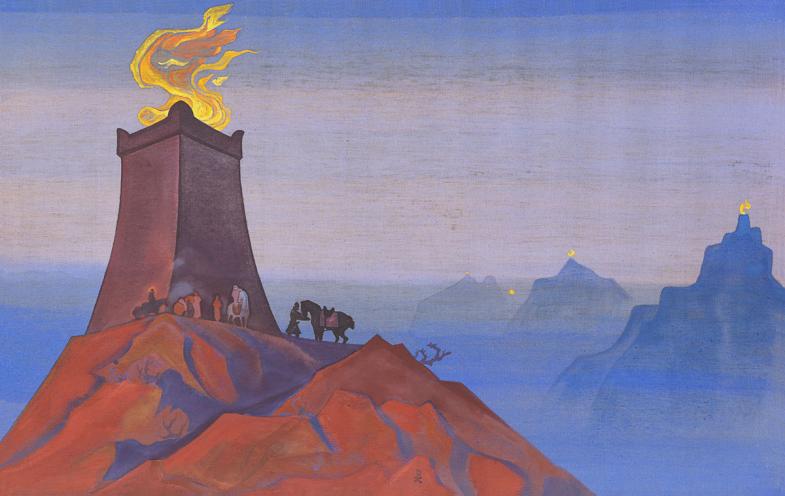The painting “The Flowers of Timur (The Fires of the Victory)” is a version of the work to the scene of which N.K. Roerich repeatedly resorted in the 1930s – 1940s. The work depicts the signal towers of the great conqueror Timur, on which fire is lit as the sign of victory. The tower archetype for N.K. Roerich were the ancient Chinese towers in the desert of Gobi which he saw during his Central Asian expedition. They have been built, starting from the 4th century B.C. for protection from nomad raids. Along the fortified wall a complex signaling system was maintained – using fires at night and in fog, and smoke in the daytime. The fires were lit on the tops of the towers, and prearranged signal was transmitted from tower to tower. In the area of fortified lines, horse posts were established to transmit reports. To maintain the signal service, the posts constantly kept ready stocks of firewood, which they had often to bring from afar. Such a signaling system had also existed in ancient Rome.
“How much poetry is contained in these nocturnal, mysterious sounds that convey messages that hurry from nowhere! As well as the “flowers of Tamerlan”, watchtowers quickly delivered the necessary messages using conventional signals.
The heart responds to all the unusual and securely cuts these precious seals into our mind. When we see a distant traveler on a vast snowy plain, we think that he is making his difficult journey not by accident and not aimlessly. Probably, he brings important news; and those who will understand the sign of the future are waiting for him.”
(N.K. Roerich. Indestructible)


